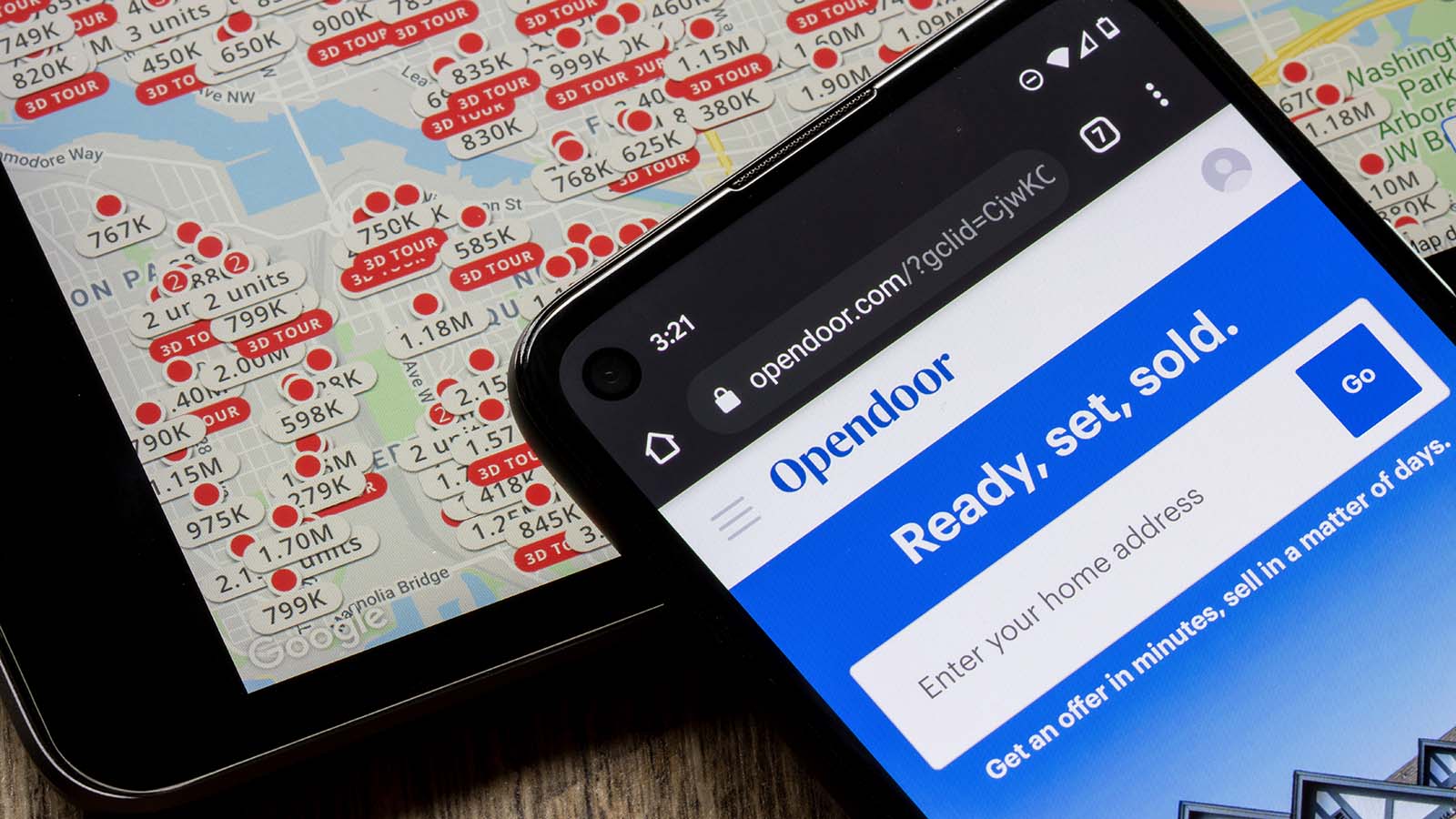As home prices surge, it must make sense to buy OpenDoor Technologies (NASDAQ:OPEN) stock, the high-tech house flipper.

Right?
Wrong.
Since the start of 2022, OpenDoor stock is down 35%. Zillow Group (NASDAQ:Z), which got out of the iBuyer market because it couldn’t make money in it, is also down, but by less than 15%.
OpenDoor, which went public in December 2020 with an opening trade of near $31.47, opened Feb. 22 of this year at $10.30. That’s a market capitalization of $6.2 billion on what could be $7.3 billion in revenue, if it hits estimates when it reports quarterly earnings tomorrow, Feb. 24.
Bargain, right? Not necessarily.
Big Numbers, No Profit for OPEN Stock
Revenue has been skyrocketing at OpenDoor as it commits to its strategy and sells homes at escalating prices. Revenue in December 2020 was just $249 million. But losses haven’t disappeared. OpenDoor lost $88 million in the fourth quarter of 2020. It’s expected to lose about $96 million in the fourth quarter of 2021.
Blame those rising prices. OpenDoor listed nearly $9 billion in assets at the end of September, more than four times what it had just nine months before. Operating cash flow losses have skyrocketed, to almost $3.6 billion in the third quarter alone. This despite home prices rising nearly 19% during 2021.
What happens if prices reverse?
Big Interest
Houses cost money. For years money has been “free.” Now money (borrowing) is costing money again.
The average 30-year mortgage cost 3.69% on Feb. 22, up from 3.15% at the start of the year. The price of shorter-term money has also risen, the 10-year U.S. Treasury note yield rose from 1.4% in December to nearly 2% now.
That represents a double squeeze for home flippers. The carrying cost of assets is rising. So is the cost of money for people who want to buy them.
Rising prices have brought out a horde of private equity buyers. About 15% of all homes bought in the fourth quarter of 2020 were bought by private equity. But as money starts costing money, carrying costs for these buyers are also rising.
Souring on iBuying
All this is making it harder for OpenDoor. It must sell homes for more than it paid, and it must account for the costs of holding them. A market that becomes more liquid also becomes more volatile. High transaction costs have kept real estate illiquid, homebuyers losing 15% of their equity in every move, from brokers and movers. A liquid market is no protection.
Wall Street, which was in love with OpenDoor just a few months ago, is walking away. Tipranks now has just four analysts covering it, with one seller, two buyers and one on the fence.
OpenDoor hopes to offset volatility with even faster turnover. It has a deal with homebuilder Lennar (NYSE:LEN) to buy homes that people are selling in order to move into new homes. It’s also doubling down, moving into the high-priced San Francisco Bay market.
The Bottom Line on OPEN Stock
Analysts who call iBuying a revolution are starting to look foolish.
Fellow InvestorPlace writer Muslim Farooque is right. OpenDoor won’t suffer the same fate as Zillow. OpenDoor will suffer a different fate.
The iBuyer business, like all house flipping, depends on low interest rates and rising prices for its profit. OpenDoor’s strategy is to use speed and technology to offset these risks, but liquid markets move fast. Private equity can move out of a market as fast as it moves in, when it doesn’t find “alpha,” those elusive above-market gains.
Inflation may be about to turn OpenDoor’s caviar dreams into cat food.
On the date of publication, Dana Blankenhorn held no positions in companies mentioned in this story. The opinions expressed in this article are those of the writer, subject to the InvestorPlace.com Publishing Guidelines.
Dana Blankenhorn has been a financial and technology journalist since 1978. He is the author of Technology’s Big Bang: Yesterday, Today and Tomorrow with Moore’s Law, available at the Amazon Kindle store. Write him at [email protected], tweet him at @danablankenhorn, or subscribe to his Substack.
